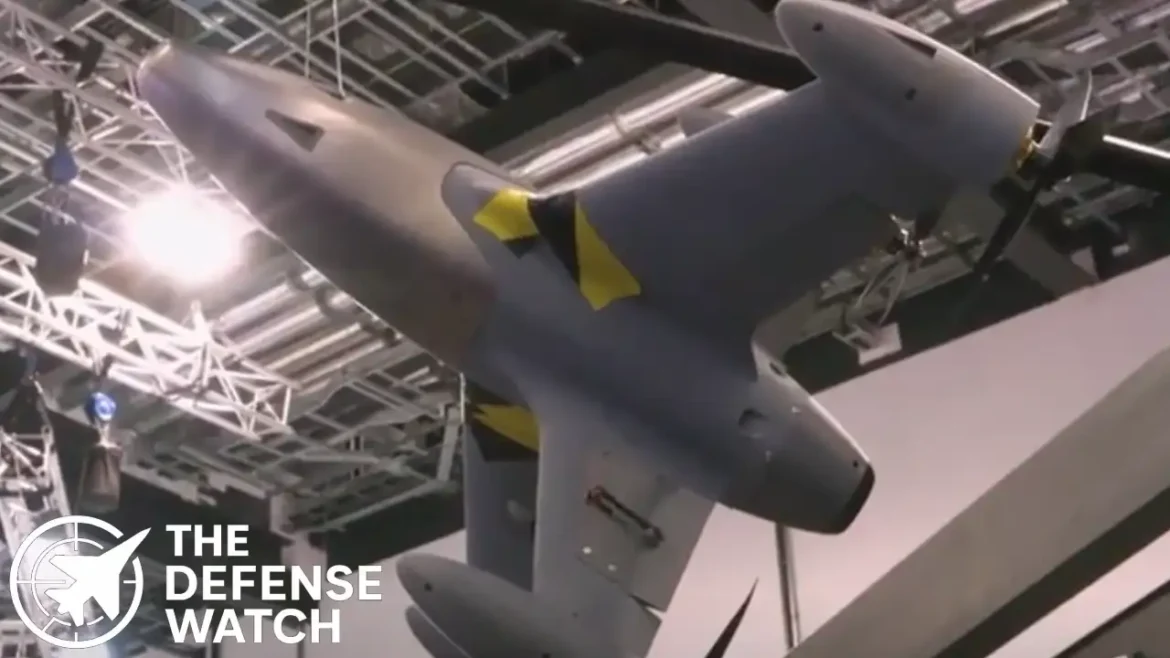A Kinetic Approach to Counter-Drone Warfare
At the 2025 DSEI defense exhibition, U.K.-based defense company MARSS unveiled a high-speed interceptor drone that neutralizes enemy unmanned aerial vehicles (UAVs) by physically ramming them out of the sky. Unlike missile-based or directed-energy counter-drone systems, this platform relies on raw kinetic force to disable its target and then continues flying.
The interceptor, designed for speed and precision, represents a shift in counter-UAV strategies as militaries grapple with the rising threat of swarms and low-cost drones used by both state and non-state actors.
How the Drone Works
The MARSS system is launched to intercept hostile UAVs, locking onto the target and accelerating to impact speed. Instead of deploying explosives or electronic jamming, the drone uses its reinforced nose cone to crash directly into enemy drones. This method not only eliminates the threat but avoids the collateral risks associated with shrapnel or electromagnetic interference.
Early demonstrations showcased the drone’s ability to repeatedly strike aerial targets with minimal self-damage, highlighting its reusability and potential cost savings over traditional missile interceptors.
Strategic Value for Modern Battlefields
The growing proliferation of cheap, commercial-grade drones in conflict zones has forced militaries to diversify countermeasures. Systems such as Israel’s Iron Beam laser, the U.S. Army’s Mobile Low, Slow Unmanned Aircraft Integrated Defense System (M-LIDS), and radar-guided missile interceptors each provide different layers of defense.
The MARSS interceptor fills a unique niche—an affordable, kinetic option for short-range engagements where other defenses may be too costly or too slow to react.
Analysis: Implications for U.S. Defense and Allies
For the U.S. military, which has invested billions into layered counter-drone capabilities, kinetic interceptors could offer a flexible supplement to existing systems. Current U.S. approaches often rely on electronic warfare, lasers, or expensive interceptors like Stinger missiles. A reusable kinetic drone provides a cost-effective tool for swarms and single-drone harassment tactics increasingly used by adversaries.
Allied militaries, particularly NATO partners, may also see value in the technology. In Europe, where Russian and Iranian drones have influenced battlefield dynamics, such interceptors could provide frontline units with a quick-response countermeasure.
Moreover, the system aligns with a broader trend toward autonomous defense solutions. Integrating AI-driven targeting and swarm tactics could make such drones vital in future air defense architectures.
Conclusion: A Future Layer in Counter-Drone Defense
The MARSS high-speed interceptor showcases how innovation is reshaping counter-drone warfare. While still in early stages, its kinetic ramming approach offers a compelling blend of affordability, reusability, and precision.
For the U.S. and its allies, this technology could soon join the layered defense ecosystem, complementing lasers, jammers, and missile interceptors. As drone threats continue to expand across conflict zones, expect kinetic solutions like MARSS’s interceptor to become a standard fixture in military arsenals.


6 comments
[…] matter as much as raw firepower. While newer competitors such as the SIG Sauer P320 (adopted by the U.S. military as the M17/M18) are gaining traction, the Glock 19 continues to hold a strong position due to its […]
[…] armor protection against kinetic and chemical energy […]
[…] has long been an enabler of U.S. military power. From GPS navigation and precision targeting to early-warning missile detection systems, […]
[…] is being elevated above expeditionary missions overseas. The classified guidance calls for the U.S. military to assist in border security, countering narcotics and human smuggling, and repelling what it […]
[…] will “provide a single operating picture of the surrounding airspace,” enhancing protection for U.S. military infrastructure and […]
[…] cost-effective counter-drone solutions that NATO is rapidly studying. Ukrainian forces deploy interceptor drones costing between $2,500 and $6,000 to engage Russian Shaheds, preserving expensive missiles for […]